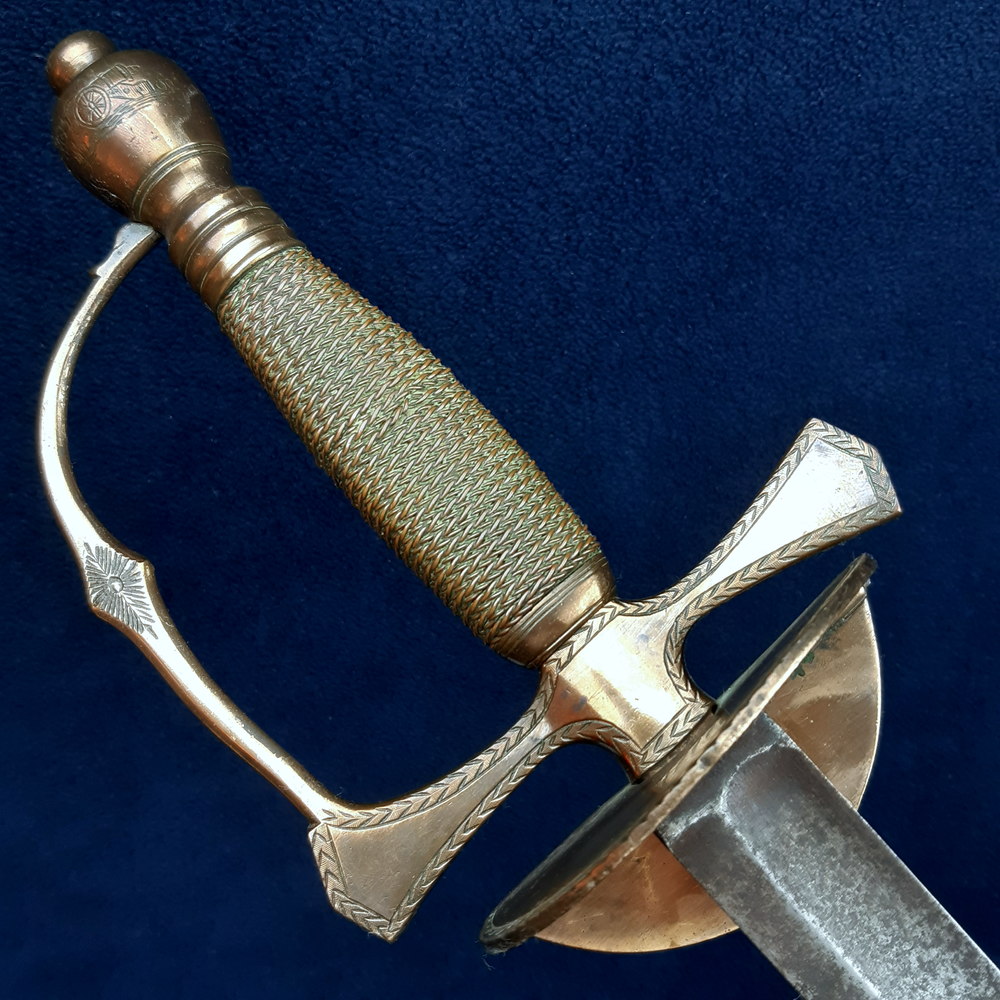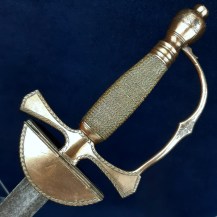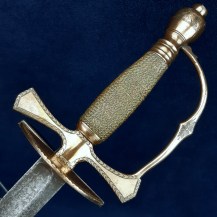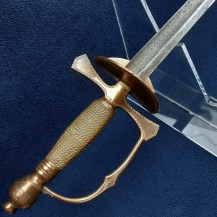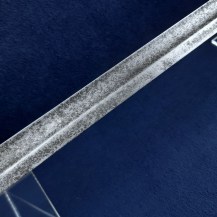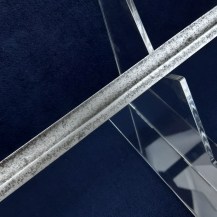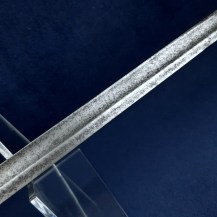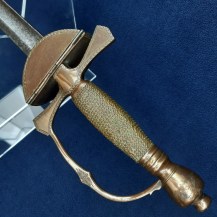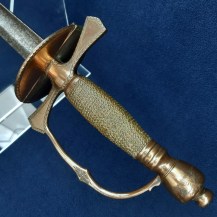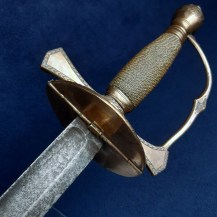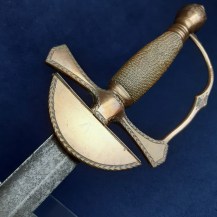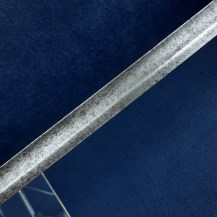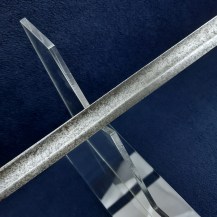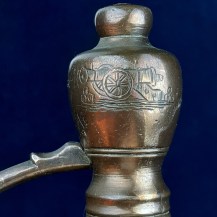British c1786 Artillery Officer’s Spadroon, Possibly Honourable Artillery Company
Straight single fullered blade with false edge, short ricasso, the fuller extending the full length of the blade up to the tip. Smallsword like hilt with all its parts in brass including folding flat oval guard, grip bound with brass wire, ferrules at each end of the grip, opposed brass quillons broadening toward their tips, slender brass knucklebow which is joined to the lower quillon and features a flattened diamond-shaped swelling just below its midpoint, brass vase-shaped pommel. No scabbard. Blade 31½ inches in length, 1 1/16 inches wide at the ricasso, the sword 38 3/8 inches overall.
Decorative engraved edging to the hilt and guard. The diamond swelling of the knucklebow is engraved with a sunburst-like pattern. The sword’s pommel is engraved on opposite sides with an image of a cannon on its wheeled carriage, with stacked cannonballs on each side, which strongly suggests some connection to the artillery.
Multiple swords of this model are known to exist, similar in some respects to other British military spadroons of the period but clearly bespoke for an artillery unit, the large quillons of the hilt in particular being unusual and quite striking, almost evoking a Maltese cross. I have seen this type described as being for officers of the Honourable Artillery Company – while the HAC has existed since 1537 and at times did carry idiosyncratic swords to enhance its ceremonial duties, I have not yet seen any documentary evidence for the connection of this type with that regiment so this must remain tentative.
The spadroon appears to have been an English innovation, first appearing around 1680. It was a light straight-bladed double-edged sword with a fuller typically running the entire length of the blade, which aimed to find a midpoint between the smallsword and broadsword, with a simpler, less restrictive guard compared to the elaborate mortuary and basket hilts of its predecessors. It was sometimes referred to as the ‘shearing’ sword and was regarded as a refined weapon, fast and agile due to its lightness but capable of cutting as well as thrusting.
The first formal instructions from the War Office on what swords should be carried by infantry officers was given in April 1786, specifying that swords should have 32 inch long straight cut-and-thrust blades at least 1 inch wide at the shoulder. The hilt, it said, should be of steel, or if not steel, should be gilt or silver according to the colour of the uniform buttons for that unit. These extremely vague rules resulted in a great deal of variation in the swords produced.
While for artillery, not infantry, this type falls very close to the 1786 regulations in blade dimensions, suggesting that it postdates their introduction.
The blade’s true edge is sharp with a number of nicks. The false edge appears unsharpened. The tip of the blade is worn and fractionally bent to the left for the last ½ inch. Mottled patination and some spots of pitting to the blade. Movement to the hilt parts – only the grip shows no movement relative to the blade. The wire binding of the grip remains tight, one small dent which has pushed the wire inwards. The folding guard functions, although due to its loosening it is no longer held flush against its leaf spring, so it moves continuously on its hinge rather than jumping between the closed and open positions and ‘locking’ there. The brass parts are moderately patinated, still lustrous, a little darker in recessed areas.

